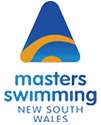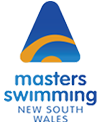This is the seventh in a series of articles designed to help you swim at your best at meets or just appreciate your swimming experience more.
In my last article, Take Your Mark No.6 – ‘Principles Of Technique’, I discussed the two underlying factors that determine swimming speed, namely propulsion and resistance, and that every aspect of technique (bar some minor exceptions) should therefore relate to either increasing propulsion or decreasing resistance.
I suggested that it might therefore be useful as well as concentrating on ‘correct’ movement patterns, to focus on what you are trying to achieve in general terms, i.e. maximising propulsion and/or minimising resistance.
So how do you incorporate technique and skill improvement into your training?
From my experience, bringing about a significant technique change in a Masters swimmer (or even an elite swimmer) who may have done the same action countless thousands of times is very, very difficult; changes require great motivation, concentration and perseverance on the part of the swimmer. So any technique correction deemed by your coach or yourself to be warranted should be practised continually every time you swim if you want this change to become permanent. Don’t wait for a ‘technique-based’ set or only practise the change when swimming slowly; focus on it all the time at all speeds. You need to ensure the change becomes part of your natural technique when you are fatigued (as you are for at least some of a race), when your technique is more prone to deteriorate.
Drills can assist in improving or changing various aspects of technique, but be aware that doing (often short distances) of a particular drill is not going to magically change your technique; you still need to incorporate the change into your full-stroke technique. Ensure you (and your coach) know WHY you are doing a particular drill, and what aspect of technique the drill is designed to improve. Also be wary of drills that involve movement patterns that are not a part of the relevant stroke. Why practise something you don’t do when you swim? (When drills first appeared in the late 1970s/early 1980s, I got the impression a virtual competition developed amongst coaches to create as many drills as possible, without any clear idea of what they may be useful for. And I suspect drills named after famous swimmers gained wider acceptance purely due to their name. I don’t think the Biondi and Popov drills would have been so widely used if they were called ‘the Smith drill’. Perhaps this mentality regarding drills persists to an extent even today.)
Coaches will ask me “How do I get swimmer X to do Y(an aspect of technique)”. I reply: “Tell X to do Y”. Nothing beats constant focus on what you are trying to achieve or change. Every lap you do, every stroke you take (with apologies to The Police) is an opportunity to swim better, smoother and more efficiently.
Different visual and verbal cues ‘work’ for swimmers to varying degrees, so if you hear or see something that strikes a chord with you and seems to really help you improve your technique, efficiency and/or speed (by increasing propulsion or reducing resistance) then recall and apply this cue(s) at least regularly, if not all the time. And use of video feedback can of course be very helpful.
The same approach applies to other skills (i.e. starts, turns and finishes). Swimmers will ask me if they can practise turns this session and I will say you can practise turns in every set you do. Sure you also need to practise turns at race speed, but whatever speed you are swimming make every turn a technically correct, well-executed turn; they are a joy to do well. The same applies to finishes. Practise some at race speed, but ALWAYS finish into the wall and try and make the adjustments necessary to finish on a full stroke. Starts should be regularly practised, either on their own or in sets of 25s or 50s; and make sure every one is done properly, practising all components from taking up your starting position to surfacing (the ‘breakout’).
While all these race skills (apart from the dive) can be practised in any set, it is useful sometimes to do a specific ‘skill’ set to hone these racing skills. One such set I use is a set of 50s (done short course), say 12×50 (any multiple of three will do) on a long rest time cycle, with the first 50 in each set of three done with a dive or proper backstroke start, or all done with a dive or backstroke start. Each set of three 50s should be done as follows: First 50: Start and first 15 metres done at maximum speed, practising all elements of the start, underwater kick or breaststroke pullout, and breakout; with the remaining 35 metres swum easy. Second 50: Middle 20 metres done at maximum speed, practising all elements of the approach to the wall, turn, underwater kick or breaststroke pullout, and breakout; with the first and last 15 metres done easy. Third 50: Last 15 metres done at maximum speed, practising all elements of the finish; with the first 35 metres done easy. This set can be adapted for long course and/or done practising the skills of the first and last 15 metres on each 50. When doing freestyle in this set, or whenever practising race skills, ensure you don’t breathe on the first stroke after your breakout, into and out of your turns, or on your final strokes into the finish.
In my next article I will discuss underwater kick. In the meantime, do every lap (and every skill) as correctly, smoothly and efficiently as you can, and swim for (your) life!
Mark Morgan

